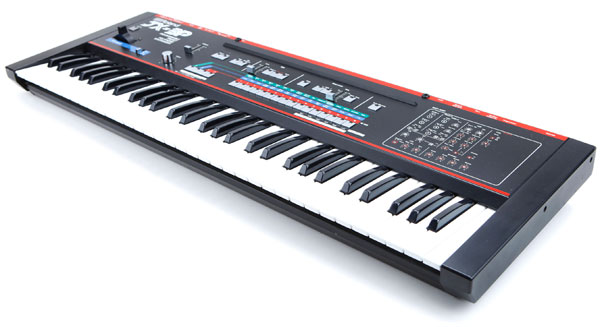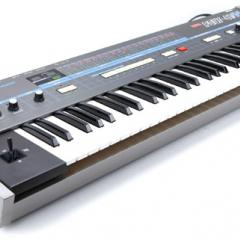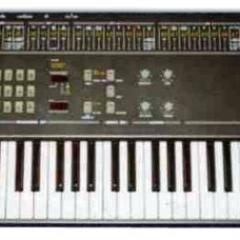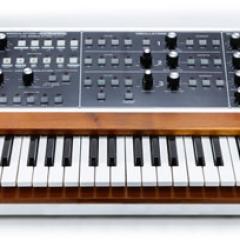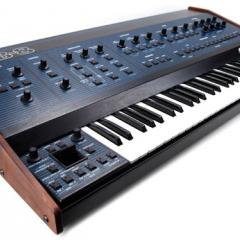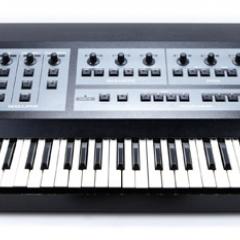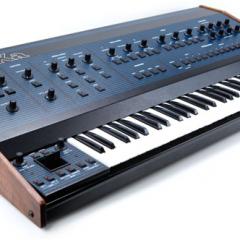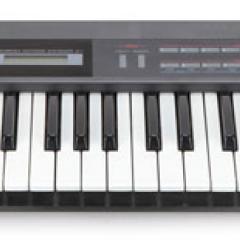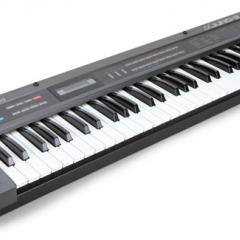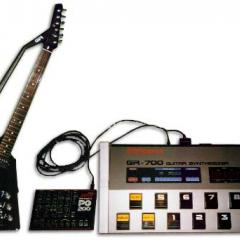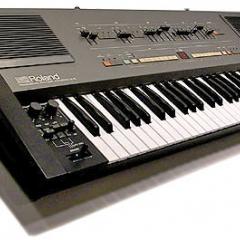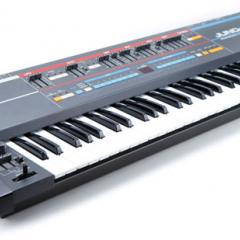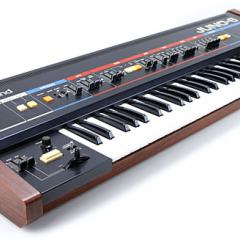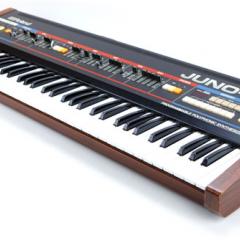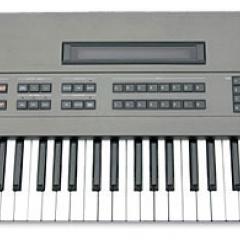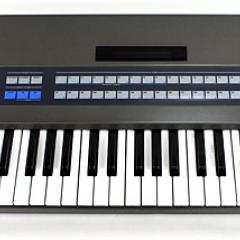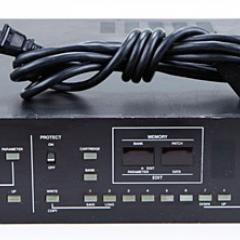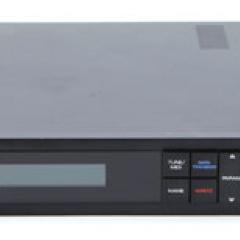Roland JX-3P
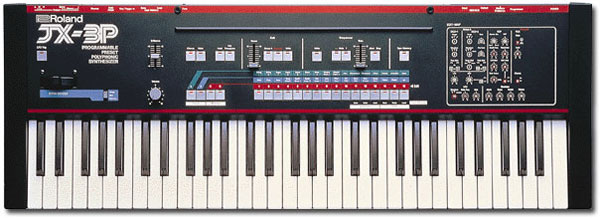
The JX-3P is something of a hidden treasure – there is more to it than meets the eye. It came out about the same time as the venerable JUNO series, but represents a shift away from the traditional analog synthesizer interface and towards a less hands-on format. The JX-3P was mostly aimed towards players looking for those great stable Roland sounds of the time, but with immediate Preset-based access to them, and only the most basic and newbie-friendly of on-board controls to adjust them. (Note the space reserved on-board for holding sheet music in place.)
That is not to say this is a dumbed down synth, but rather, the digital technologies being explored by Roland at the time allowed for greater programability while simultaneously reducing the need for dedicated hands-on controllers per parameter - a path most synth manufacturers walked down during the eighties. This means that sliders and knobs were being phased out in favor of push-buttons, fewer sliders and a powerful programming interface tucked away “under the hood”.
The JX-3P shares the same great analog filters and VCAs as the JUNO and even the JUPITER series. Just like the JUNO, it’s a six voice polyphonic feeding digitally controlled oscillators (DCOs) through analog filters, envelopes and amps. However, the JX-3P has two oscillators per voice instead of the single osc. found in the JUNO synths, and while that does allow for greater flexibility, the onboard programming interface is a lot less fun and hands-on than that of a JUNO, no doubt contributing to the popularity the JUNO series enjoys over the JX-3P. You will need the optional PG-200 programmer if you want a real hands-on experience with the JX-3P.
Surprisingly, the JX-3P is MIDI equipped, in fact it was Roland's first MIDI synth. However, its MIDI was limited to basic note on/off information only. Synths like the JUNO 106 had far better MIDI implementation. But the JX-3P also featured an on-board 128-step sequencer and came in a (slightly modified) rack-mount version called the MKS-30.
Although the JX-3P may not be as popular as a JUNO, it makes a great vintage synth capable of creating some lush, classic analog sounds. And without the cult status of other synths similar to it, they can also be found at bargain prices, making them a definite synth to consider when looking for those classic early eighties Roland sounds. And aftermarket upgrades (like the KIWI-3P) can make it just as good, if not better, than any other polyphonic analog synths out there! It has been used by The Future Sound of London, Astral Projection, Vince Clarke, Orbital, Luke Vibert, Stevie Nicks, and Thomas Dolby.
Demos & Media

Specifications
Websites of Interest
Resources
Images from Perfect Circuit Audio.
Review updated January 2012
